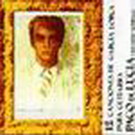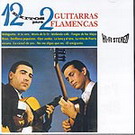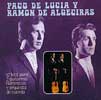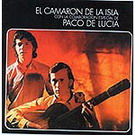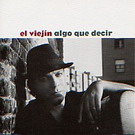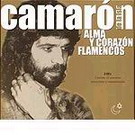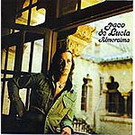Francisco de Asís Tárrega y Eixea, also known as "Francisco Tarregas", born in 1852, November 21. in Villareal Castellón and died in 1909 December 15.
His father was Francisco Tárrega Tirado, his mother was Antonia Eixea Broch, they worked as dometsics for the "Madres Clarisas".
When he was young he escaped from his baby sitter and fell in an irrigation canal, the shock damaged his eyes for ever. His father thougth he could loose his sight and decided to move to Castellon to be able to offer him music classes in order to have an office in case of being blind.
His first teacher was Eugenio Ruiz and Manuel Gonzalez, also known as "El ciego Marina", both blind.
In 1862 the soloist Julian Arcas heared him playing guitar and encouraged the family to send him to Tarregas, Barcelona, to improve his music studies.
The family financial situation was not in good moments and to help his family Francisco offer concerts in the neighboring villages and he obtained a pianist position in the "Casino de Burriana". Antonio Canesa, a rich businessman, payed him the trip to Madrid in order that he studied in the "Conservatorio Nacional de Musica".
This is when his teacher Arrieta recommended him to pulled out his piano career and to devoted his time to the guitar. During the winter 1880 Tarregas replaced Luis de Soria for the concert Novelda in Alicante and he met his future wife there, Maria Rizo.
The couple moved to Madrid and had their first daughter, Maria Josefa. She died after a few days, and they moved to Barcelona.
In Valencia he met a woman who will have an influence on his career: Concha Martinez, rich and widow. She is like his artistic protection, lending a house in Sant Gervasi (Barcelona). There, Tárrega composed most of his best works.
Tarregas is a sensitive and warm person and very shy, he always prefered small concerts and this is a fiancial problem for him.
In January 1906 he suffered a hemiplegia that paralyzed the left side of his body. This long illness let this family wihtout money and his friends arranged some concerts to raise money.
He recovered and started a new tour in October 1908. He went back to Castellón and on December 3. he felt bad and he came back to Barcelona. In 1909, December 15. he died in his house of Valencia street.
Francisco de Asis Tarrega y Eixea, "Francisco Tarregas"
Francisco Sanchez Gomez, "Paco de Lucía"
Price
13.636 €-
(14.59
USD)
Francisco Sánchez Gómez, also known as "Paco de Lucía", born in Algeciras, Cadiz, in 1947, on December 21.
His parents were Antonio Sánchez Pecino from Algeciras and Lucia Gómez from Portugal. He received his artistic name because of his mother. When he was young the persons of his neighborhood called him "Paco de Lucia". His first guitar teachers were his father and his brother Ramón. His father learned guitar with Manuel Fernández "Titi Marchena", cousin of Melchor Marchena.
With his brother "Ramón de Algeciras", also a professional guitarist, they formed a group during a few years. He accompanied him on some recordings although each of them were bulding their own careers.
In the middle of the sixties he met "Camarón de la Isla", they experienced an extraordinary musical chemistry and they recorded 10 discs together between 1968 and 1977.
"Paco de Lucía" is influenced by two schools: "Niño Rocardo" and "Sabicas". "Niño Ricardo" is the convergent combination of the classical flamenco guitar and the modern guitar. And Sabicas extended the flamenco guitar technic: the three fingers "rasgueo" and the "alzapua" in only one string. Sabicas had an extraorindary technic with a deep sonority. Sometimes they played without microphone, due to the strong beat and the huge quality of his compositions.
The best contribution of "Paco de Lucía" for the flamenco is making this art international and popular. We consider him like a spendid performer because of his personality. His rhythm is strenuous and rhythmical.
He received a lot of awards along his life, and we cannot enumerate all of them, just a few: "premio nacional de Guitarra de Arte Flamenco", the "medalla de Oro al Mérito de las Bellas Artes" (1992), the "Distinción Honorífica de los Premios de la Música" (2002) and the "premio Príncipe de Asturias de las Artes" (2004).
One of his passions are the diving and the football (soccer), and we he is in Madrid he should be in "Casa Patas" or "El Candelas".
Partial records:
Los Chiquitos de Algeciras in 1961, with Pepe de Lucía.
Dos Guitarras Flamencas in 1965, with Ricardo Modrego.
Doce Canciones de García Lorca para Guitarra in 1965, with Ricardo Modrego.
Dos Guitarras flamencas en América Latina in 1967, with Ramón de Algeciras.
Canciones Andaluzas para dos guitarras in 1967, with Ramón de Algeciras.
La fabulosa Guitarra de Paco de Lucía in 1967.
Doce Hits Para 2 Guitarras Flamencas in 1969.
Hispanoamérica in 1969.
Fantasía Flamenca in 1969.
Recital de Guitarra in 1971.
Con Los 7 de Andalucía in 1971.
El Mundo del Flamenco in 1971.
El Duende Flamenco in 1972.
Fuente y Caudal in 1973.
En vivo desde el teatro real in 1975.
Almoraima in 1976.
Interpreta a Manuel de Falla in 1978.
Castro Marín in 1981.
Friday Night in San Francisco in 1981, with Al Di Meola and John McLaughlin.
Sólo quiero caminar in 1981, The Paco de Lucia Sextet.
Passion, grace and fire in 1983, with Al Di Meola y John McLaughlin.
Live... one summer night in 1984, Paco de Lucia Sextet.
Siroco in 1987.
Zyryab in 1990.
Concierto de Aranjuez de Joaquín Rodrigo in 1991.
Live in América in 1993, Paco de Lucia Sextet.
The guitar trío in 1996, with Al Di Meola and John McLaughlin.
Luzia in 1998.
Esta Es Mi Historia in 2002.
Nueva Antología Edición conmemorativa del Premio príncipe de Asturias in 2004.
Cositas Buenas in 2004.

